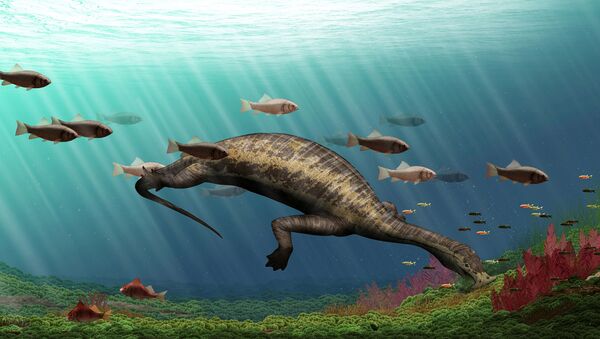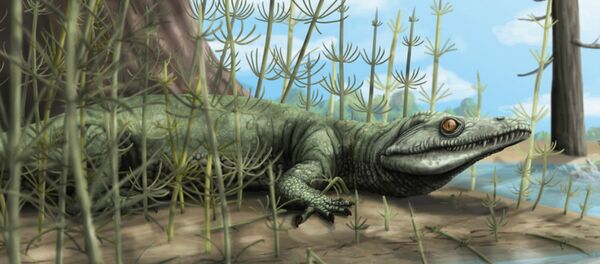At first glance they thought its head, which had been poorly preserved, had a beak like that of a flamingo. Flamingos filter food from water that they pick up, and most species are able to filter shrimp, mollusks, crustaceans and insects.
However, further research has determined that the ancient reptile was a vegetarian, making it the earliest known example of an herbivorous marine reptile, living approximately ten million years after the Great Permian Extinction which took place 252 million years ago.
"It's got a hammerhead, which is unique, it's the first time we've seen a reptile like this," said Olivier Rieppel, Curator of Evolutionary Biology at The Field Museum in Chicago, and co-author of a paper about the animal which was published in Science Advances.

The scientists say that the reptile's jaw structure was clearly that of a herbivore; it had chisel-shaped front teeth and densely-packed needle-shaped teeth at the back of its mouth.

Atopodentatus is the oldest known herbivorous marine reptile, and its development following the Permian mass extinction demonstrates how life on earth reacted to that event.
"The existence of specialized animals like Atopodentatus unicus shows us that life recovered and diversified more quickly than previously though. And it's definitely a reptile that no one would have thought to exist – look at it, it's crazy!"





